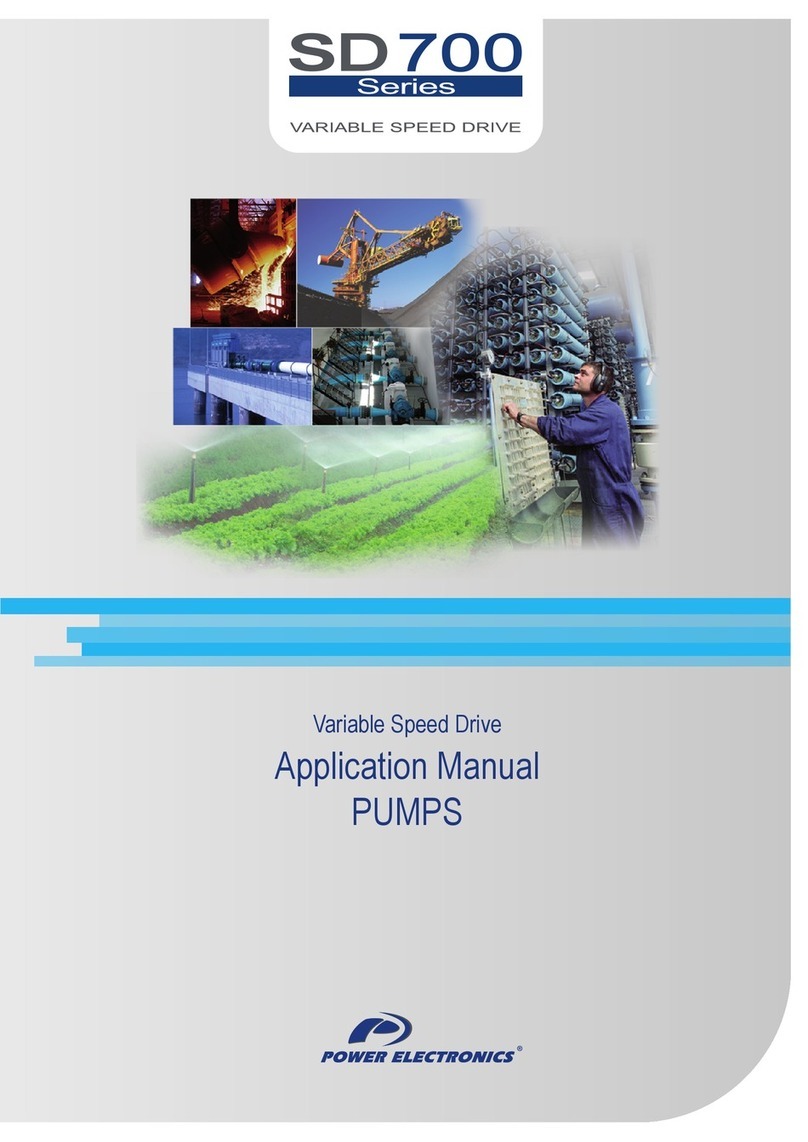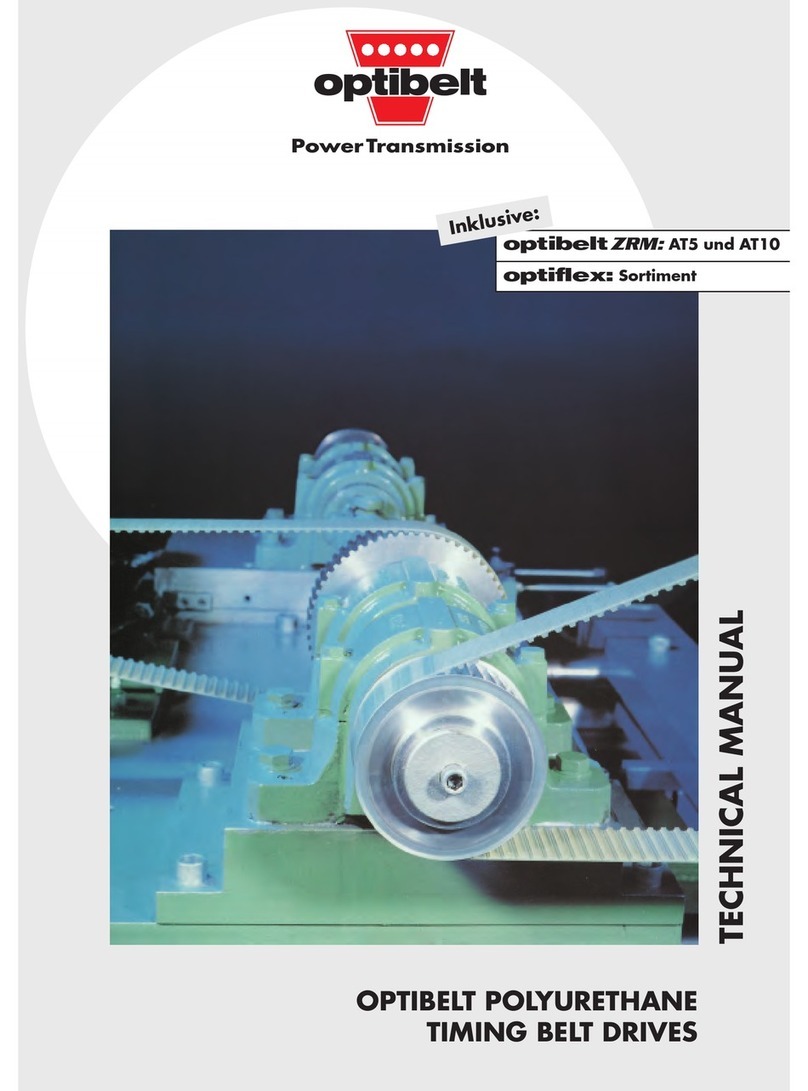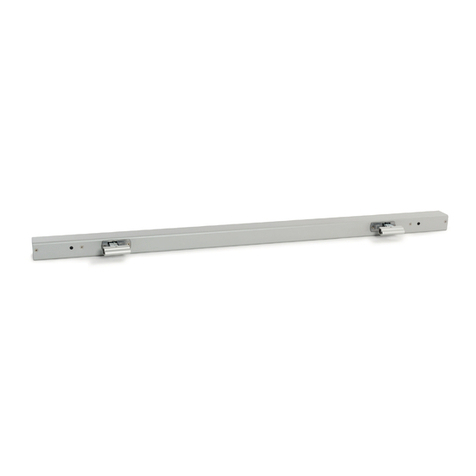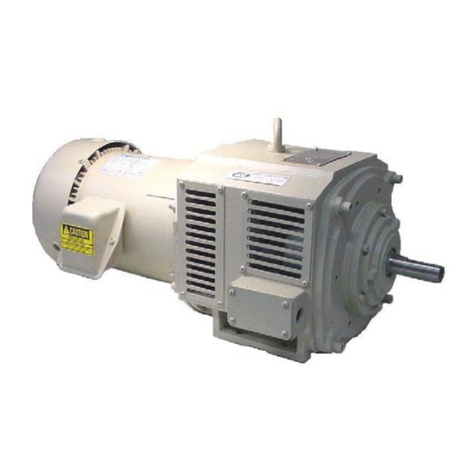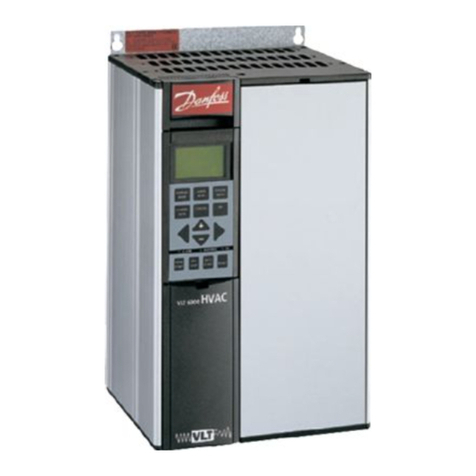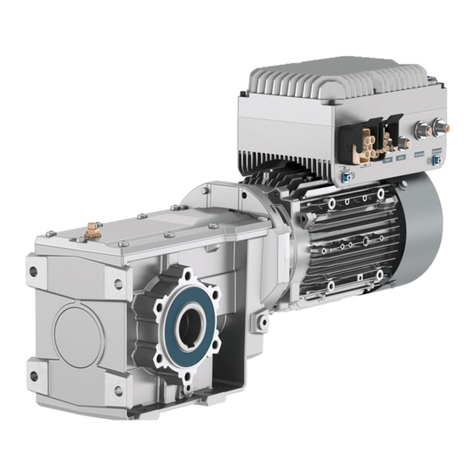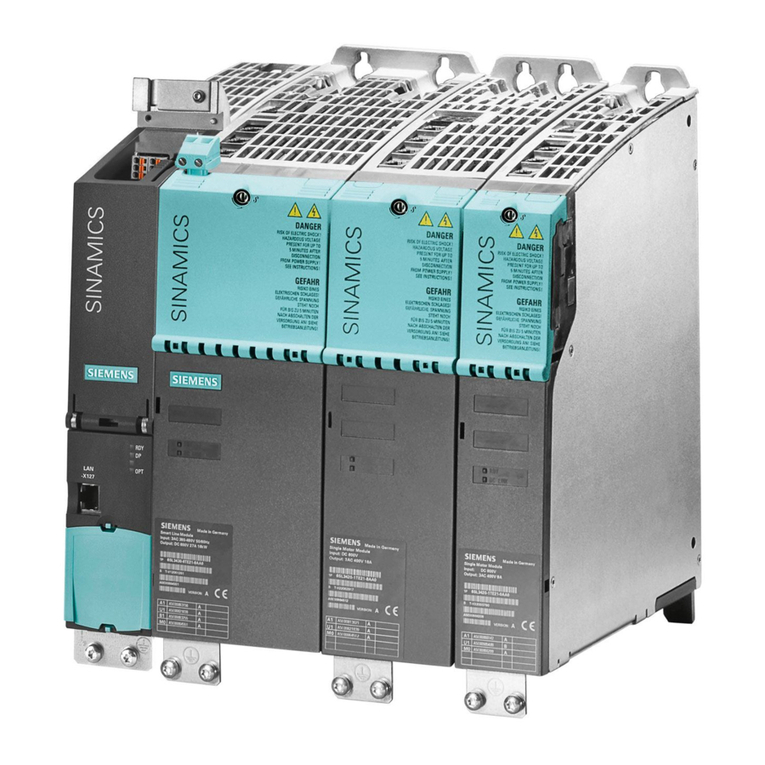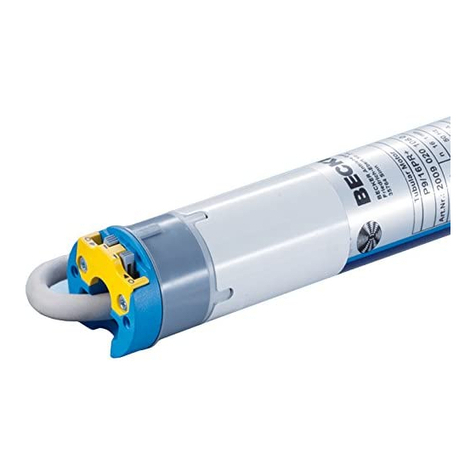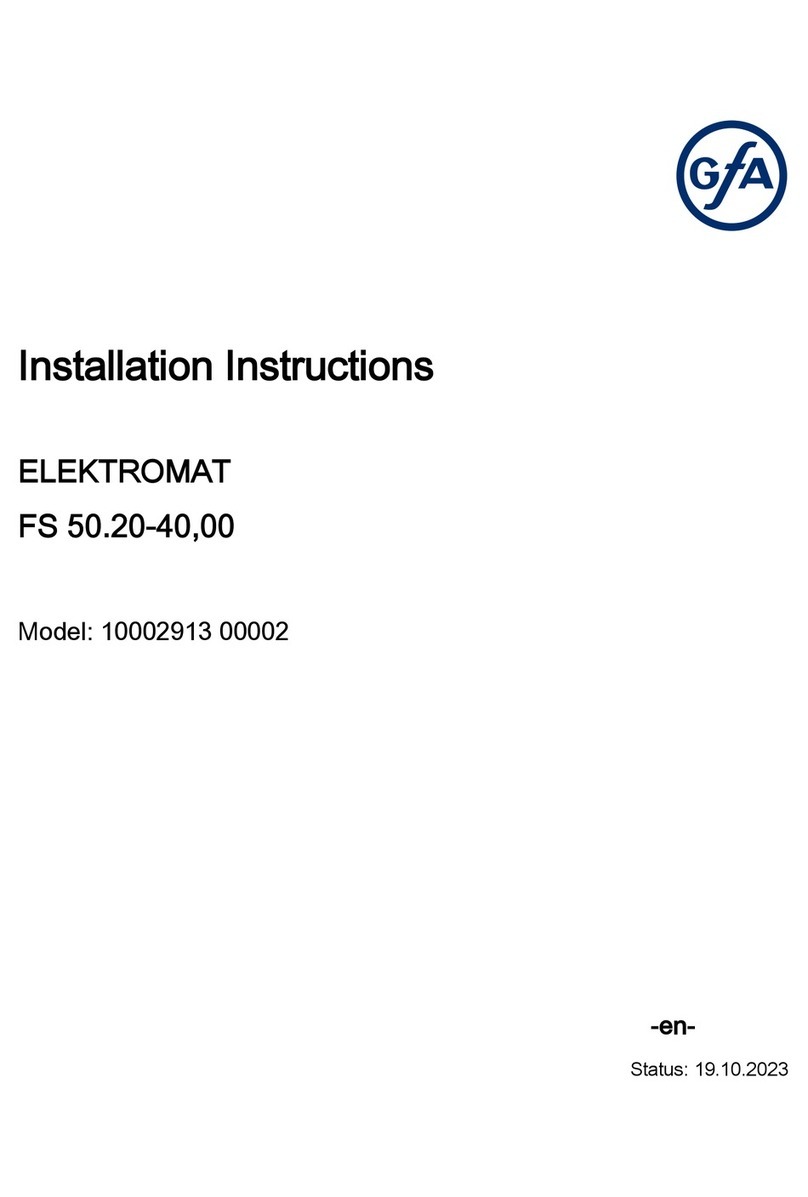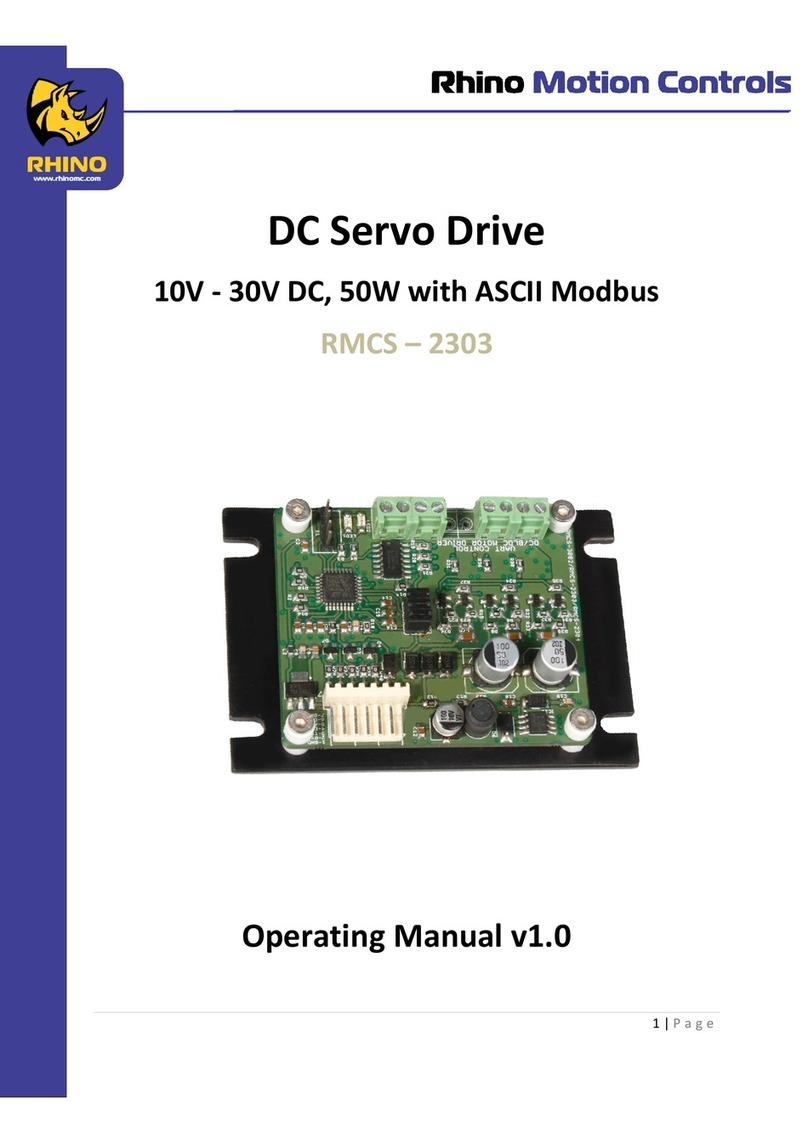FEDERAL PACIFIC PSI Series Operating and maintenance instructions

601 Old Airport Road • Bristol, VA 24201 Phone (276) 669-4084 • FAX (276) 669-1869 • www.federalpacific.com • ISO9001:2015
SECTION IB-1G-500
INSTALLATION & OPERATION INSTRUCTIONS
PAD-MOUNTED SWITCHGEAR TYPE PSI
REV. 1.6 - NOVEMBER 2017
PAGE 1
TYPE PSI
PAD-MOUNT SWITCHGEAR
15kV • 25kV • 35kV
INSTRUCTIONS
For Installation and Operation
INTRODUCTION..................................................................................1
Receiving...........................................................................................1
Handling............................................................................................1
Storage..............................................................................................1
GENERAL DESCRIPTION .................................................................. 1
SAFETY FEATURES ............................................................................1
INSTALLATION ...................................................................................2
Placement of Unit .............................................................................2
Barrier System Removal ................................................................2,3
Customer Cable Connections............................................................3
SWITCH DESCRIPTION..................................................................4,5
Ratings ..............................................................................................4
Operating the Auto-jet® Switch.................................................................................................6
FUSE DESCRIPTIONS........................................................................7
Load-break Fuse Operation...............................................................7
Non-load-break Fuse Operation........................................................8
Fuse Ratings......................................................................................9
Recommended Clearances ............................................................. 11
OPTIONAL FEATURES .......................................................................8
AUTO-LATCH DOOR FEATURES.......................................................8
Operation ........................................................................................10
MAINTENANCE................................................................................10
© 2014 Electro-Mechanical Corporation

601 Old Airport Road • Bristol, VA 24201 Phone (276) 669-4084 • FAX (276) 669-1869 • www.federalpacific.com • ISO9001:2015
SECTION IB-1G-500
INSTALLATION & OPERATION INSTRUCTIONS
PAD-MOUNTED SWITCHGEAR TYPE PSI
REV. 1.6 - NOVEMBER 2017
PAGE 2
Introduction
Type PSI pad-mounted switchgear is designed to make instal-
lation, operation and maintenance as simple as possible and to
provide dependable on-the-line service.
High quality materials and careful workmanship have been
combined to provide the best switchgear available. The switch-
gear has been thoroughly inspected and adjusted at the factory.
However, successful operation depends on proper installation
and care.
This manual has been written to assist you in obtaining long and
economical service from your switchgear.
Read this manual before installing and operating your switch-
gear.
Receiving
Upon receipt of the switchgear, check each item received for
shipping damage. Each item should be checked against the
shipping manifest to assure that the proper number of items
were received. Should any shortage or damage exist, a claim
must be filed at once with the carrier, and the Federal Pacific
agent or sales office must be notified.
Handling
The switchgear is securely mounted to a sturdy shipping pallet
with provisions for forklift use in removing the unit from truck.
The use of a forklift truck is not recommended, but if this method
is used the forks must extend through the skid to avoid damag-
ing the equipment.
Removable lifting plates are provided to allow the use of hooks
to lift the complete enclosure. The lifting device should be ar-
ranged to evenly distribute the lifting force between the lifting
plates. Do not lift at an angle less than 60 ° from the horizontal.
(See Figure 1)
Storage
The switchgear as received will be wrapped in a protective
plastic film. If the switchgear is not to be installed immediately,
the protective film must be removed for outdoor storage of unit.
Export or special packing is available as an option based on
customer's requirements and special conditions. Separate
instructions are available for these situations.
Figure 1. Lifting Method
General Description
Type PSI pad-mounted switchgear consists of one or more
three-pole, single-throw, gang-operated, quick-make, quick-
break, load interrupter switches. When used in conjunction
with power fuses, expulsion or current-limiting type, and other
protective devices, the PSI switchgear provides a safe and
efficient means of 3-pole switching and circuit protection.
Safety Features
Type PSI pad-mounted switchgear incorporates a number of
security features to minimize hazards to operating personnel.
1. Rugged 11-gauge steel, all welded construction of the enclo-
sure, roof, and doors assures a tamper-resistant design.
2. Padlockable switch operating pocket handles and doors with
security bolts provide user-controlled access.
3. Switch position indicators positively verify switch position.
4. Provisions to padlock switch in open or closed position permit
user controlled switch operation. (Optional)
5. Key interlocktoensureapredetermined sequenceof mechani-
cal operations. (Optional)
6. Warning signs and labels, both external and internal, which
indicate potential hazards to personnel.

601 Old Airport Road • Bristol, VA 24201 Phone (276) 669-4084 • FAX (276) 669-1869 • www.federalpacific.com • ISO9001:2015
SECTION IB-1G-500
INSTALLATION & OPERATION INSTRUCTIONS
PAD-MOUNTED SWITCHGEAR TYPE PSI
REV. 1.6 - NOVEMBER 2017
PAGE 3
Installation
Each unit is shipped with this instruction bulletin which will be
located inside the switch compartment door. These instruc-
tions should be reviewed prior to placing unit on pad.
Figure 2. Typical Pad Layout
Placement of Unit
Remove unit from shipping pallet per handling procedures of
Page 2 (Figure 1). When unit has been correctly oriented and
placed on pad (Figure 2), verify that unit is level and shim if nec-
essary between unit base and pad. Secure unit to pad using
four (4) tie-down clips as furnished (see Figures 3 and 4). Check
compartment door operation for any binding due to enclosure
distortion and re-shim if necessary. A recessed grouting
should then be applied between unit base and pad to prevent
entry of foreign objects.
Corner Detail
Base of Cabinet
Anchor Bolt
Customers Pad
Figure 3. Typical Anchor Bolt Location
Barrier System Removal
The use of interphase, phase-to-ground, and dual purpose
front barriers enhances the operation of pad-mounted switch-
gear by field personnel. The standard barrier system for Type
PSI pad-mounted switchgear is the patented drawout barrier
system which maintains all the features of a barrier system and
permits the removal of all barriers from a compartment during
initial installation and cable
termination when the switchgear
is completely de-energized
and grounded.
Removal of the barriers is readily accomplished as follows:
1. The unit must be completely disconnected from all power
sources, tested for voltage and grounded before barrier
removal is attempted.
2. Open main door and secure with door keeper.
3. Remove the dual purpose barriers from their normal hang-
ing position. If the optional B4/B5 barrier is provided, it must
be removed before dual purpose barriers may be accessed
(see page 4).
4. Rotate barrier retaining latches to vertical position. (Figure 5)
5. Grasp nylon pull loops located at upper corners of viewing
window and withdraw barrier assembly approximately 12
inches. (Figure 6)
6. Grasp side-support angles located at upper sides and
remove barrier assembly from unit. (Figure 7)
7. Place barrier assembly and components in convenient
location. (Figure 8)
8. Barrier system may be re-installed by reversing the steps
above.
Figure 4. Bolting Units to Pad
PSI-X
Recommended Pad Layout
Cabinet
Recommended
Pad Section
5/8-11 Anchor
Bolts (by others) 4 Tie Down
Plates Provided w/Unit

601 Old Airport Road • Bristol, VA 24201 Phone (276) 669-4084 • FAX (276) 669-1869 • www.federalpacific.com • ISO9001:2015
SECTION IB-1G-500
INSTALLATION & OPERATION INSTRUCTIONS
PAD-MOUNTED SWITCHGEAR TYPE PSI
REV. 1.6 - NOVEMBER 2017
PAGE 4
The optional B4/B5 lift-off barrier is provided to meet the
requirements of Section 381-G of the National Electrical Safety
Code. The B4/B5 barrier (if provided) may be removed as fol-
lows:
1. Disengage security bolts at the top of the B4/B5 barrier.
See Figure 6.
2. Grasp nylon lifting loops, remove barrier from support
hooks and remove barrier from unit. See Figure 7.
3.
B4/B5 barrier may be reinstalled by reversing the steps above.
Customer Cable Connections
With draw-out barrier assembly removed, customer cables
may be easily terminated per the following procedure:
1. The hanging weight of the primary cables must not be al-
lowed to place undue strain on the switch/fuse termination
bus. Should this situation exist, cable supports must be
used. The mounting holes in the switch/fuse termination bus
and the cable connector must align to prevent undue strain.
2. Make up the primary cable connections per user URD
operating procedures, cable manufacturer instructions, and
cable terminator manufacturer instructions.
3. Remove surface oxides and coat both surfaces with suitable
joint compound.
4. Attach cable connector to the switch/fuse termination bus
using 1/2-inch hardware as shown in Figure 8.
5. Connect the concentric neutral wires and enclosure
grounding pads inside enclosure to establish a ground sys-
tem conforming to user's standard grounding procedures.
NOTE: The maximum momentary rating of the switchgear
must be considered when selecting cable size for connecting
switchgear to system ground. Refer to unit rating plate.
6. Install and connect surge arresters or fault indicators, if ap-
plicable.
7. Install draw-out barrier system. (See section on barrier
system removal).
Figure 6
Figure 5
Figure 7
Figure 8
Figure 10
Figure 9

601 Old Airport Road • Bristol, VA 24201 Phone (276) 669-4084 • FAX (276) 669-1869 • www.federalpacific.com • ISO9001:2015
SECTION IB-1G-500
INSTALLATION & OPERATION INSTRUCTIONS
PAD-MOUNTED SWITCHGEAR TYPE PSI
REV. 1.6 - NOVEMBER 2017
PAGE 5
Switch Description
The Auto-jet®switch provides a unique method of load inter-
ruption, producing a laminated jet of air which extinguishes the
arc.
Auto-jet®switches have a heavy gauge steel, all welded base
frame that assures proper alignment and eliminates any prob-
lem of switch-to-enclosure alignment. A quick-make, quick-
break stored energy mechanism with heavy duty, long life die
springs provides high speed opening and closing independent
of the operating handle speed. This durable mechanism as-
sures safe load make, 3-time fault closing capability, and load
interruption with the Auto-jet®interrupter.
Figure 11. Connector/Termination Detail
15 kV and 25 kV Switches
34.5 kV Switches
RATINGS
kV Amperes RMS Fault-
Close
Duty
Cycle*
Nom. Max.
Des. BIL Cont.
Interrupting Mom. &
Fault-Close
(ASYM KA)
Load Cap. Mag.
15 17 95 600 600 100 21 40 3
15 17 95 1200 1200 100 21 40 3
25 27 125 600 600 100 21 40 3
34.5 38 150 600 600 27 21 40 3
*The three-time duty-cycle fault-closing rating means that the
switch can be closed three times into rated fault amperes and re-
main operable and able to carry and interrupt its rated load current.

601 Old Airport Road • Bristol, VA 24201 Phone (276) 669-4084 • FAX (276) 669-1869 • www.federalpacific.com • ISO9001:2015
SECTION IB-1G-500
INSTALLATION & OPERATION INSTRUCTIONS
PAD-MOUNTED SWITCHGEAR TYPE PSI
REV. 1.6 - NOVEMBER 2017
PAGE 6
probe. At the end of its travel, the piston released from the arc-
ing probe and, under the action of the heavy spring, is rapidly
pushed backward into the cavity. This travel produces a jet of
laminated compressed air up through the hollow center of the
piston, which extinguishes the arc. The spring encircling the
movable arcing probe rapidly retracts the probe and increases
the speed of separation, which prevents restrike.
Interrupter Operation
The Auto-jet®switch has a highly efficient system for load cur-
rent interruption. This device consists of a piston (A) mounted
in the cavity of the upper insulator. The movable arcing probe
(B) engages a tulip contact (C) inside the piston. As the switch
blade (D) is pulled open by the stored energy mechanism, the
main contacts open. The piston is pulled forward by means of
the movable arcing probe, which compresses a heavy gauge
spring encircling the piston and a spring encircling the arcing
Switch closed with opening
spring relaxed.
Switch closed with opening
spring charged by manual
operating handle.
Main contacts parted, puffer
and arcing springs charged.
(Simulated condition for
illustrative purposes,
actual duration of event is
approximately 1/2 cycle.)
Switch open with latch
engaged to hold switch in
position.

601 Old Airport Road • Bristol, VA 24201 Phone (276) 669-4084 • FAX (276) 669-1869 • www.federalpacific.com • ISO9001:2015
SECTION IB-1G-500
INSTALLATION & OPERATION INSTRUCTIONS
PAD-MOUNTED SWITCHGEAR TYPE PSI
REV. 1.6 - NOVEMBER 2017
PAGE 7
Operating the Auto-Jet®Switch
1. Remove padlock and open switch lockbox access cover. (Fig-
ure 12)
2. Remove switch operating handle from storage tube and
place on hex switch-operating shaft (Fig. 13). If provision to
padlock switch in open or closed position is provided (K2 op-
tion), padlock must be removed before access to hex switch-
operating shaft can be accomplished.
If key interlock(s) are provided (Optional), switch may be
locked in the open position.
3. Rotate handle in the direction as indicated to open or close
switch. Verify switch position by observing the switch posi-
tion indicator. (Figure14)
4. Remove handle and return to handle storage tube.
5. Close switch lockbox access cover and padlock.
Caution: Access cover should be padlocked whenever switch-
gear is left unattended.
NOTE: The standard barrier system provides dual purpose
barriers for insertion into the open gap when switch is in the
open position (Figure 14). Should an attempt be made to close
the switch with the DP barriers in the inserted position, the DP
barriers will prevent the switch blades from closing (Figure 15).
Should this occur, turn the switch handle briskly in the direction
required to open the switch. The switch mechanism will latch
and after the DP barriers are removed and returned to the hang-
ing position, the switch may be closed in the normal manner.
Figure 16. DP Barrier in slide-in position.
Figure 12. Remove Padlock and Open Door.
Figure 13. Remove Handle. (chained)
Figure 14. Rotate Handle in direction as indicated.
Figure 15. DP Barrier lifted to slide into place.

601 Old Airport Road • Bristol, VA 24201 Phone (276) 669-4084 • FAX (276) 669-1869 • www.federalpacific.com • ISO9001:2015
SECTION IB-1G-500
INSTALLATION & OPERATION INSTRUCTIONS
PAD-MOUNTED SWITCHGEAR TYPE PSI
REV. 1.6 - NOVEMBER 2017
PAGE 8
Auto-Jet®Load-break Fuse
The Auto-jet®fuse mounting has a stored energy load-break
device that permits single-pole live switching in single phase or
three phase circuits by the use of an ordinary hotstick. The de-
vice has a 3-time fault close duty-cycle when the fuse is closed
briskly without hesitation. The overall unit rating may be limited
by the fuse rating.
The same unique laminated air jet interrupter system used in the
3-pole group operated switches is applied in the Auto-jet®load-
break fuse mountings.
Load-break Fuse Operation
1.
Open appropriate fuse compartment door and secure.
2. Remove optional B4/B5 inner door barrier, if applicable.
Remove optional B2 fuse dual purpose barrier, if applicable,
permitting access to desired fuse. The dual purpose barrier
may be removed using hotstick and grappler tool arrange-
ments. See Figure 16.
3. Install grappler tool as shown.
4. Pull the fuse open with one brisk continuous motion to fully
open position (45°). Maintain downward force on fuse until
fuse opening motion has ceased to prevent tendency for
fuse to bounce toward the closed position. See Figure 17.
Do not assume that an open fuse position indicates the fuse to
be de-energized.
5. Reinstall grappler onto fuse assembly and while grasping
hotstick firmly, lift fuse assembly up and out of mounting.
See Figure 18.
6. If optional dual-purpose barriers are supplied, use grappler
to install into slide-in position to provide barrier between
Auto-jet®fuse interrupter and fuse bottom hinge. See
Figure 19.
Do not attempt to close main door unless open fuse has been
removed from unit.
7. Re-fuse using the procedures included with the replace-
ment fuse unit.
8. Remove optional dual purpose barriers, if supplied, using
grappler. See Figure 19.
9. Reinstall grappler onto fuse assembly and place fuse
assembly into fuse mounting in the 45° open (disconnect)
position. See Figure 18.
10. Insert grappler prong into fuse pull ring and push up briskly
on the fuse assembly, completing the closing stroke in one
motion. See Figure 17.
11. Before removing grappler from fuse pull ring, push firmly to
assure that the fuse is completely closed and latched.
12. Use grappler to return optional dual purpose barrier, if
furnished, to the normal, hanging position. See Figure 16.
13. Close the main door and padlock before leaving gear.
Illustration of Auto-Jet®Fuse Interrupter
3. Holder Parted, Auto-jet®Reset For Next Operation
2. Main contacts Have Parted, Puffer Spring Charged, and Interrupter
Parted
1. Closed: Hookstick Ready To Open

601 Old Airport Road • Bristol, VA 24201 Phone (276) 669-4084 • FAX (276) 669-1869 • www.federalpacific.com • ISO9001:2015
SECTION IB-1G-500
INSTALLATION & OPERATION INSTRUCTIONS
PAD-MOUNTED SWITCHGEAR TYPE PSI
REV. 1.6 - NOVEMBER 2017
PAGE 9
Figure 21.
Non-Load-break Fuse Operation
When non-load-break style fuse mountings are furnished, such
as the S&C type SM-5 or the clip style mountings to accom-
modate Cooper Type NX andType Q, the fuse replacement
procedure would be similar to those for the Auto-jet®fuse.
However, the following precautions should be observed when
work is performed on non-load-break fuses:
1. Any upstream device which could energize the fuse must
be opened and rendered inoperative to remove possibility
of inadvertently energizing the fuse.
2. Upon opening the fuse compartment door, the equipment
should be tested for the presence of voltage using a suit-
able voltage sensing device and hotstick arrangement.
3. If no voltage is present, the appropriate fuse terminal
should be grounded using proper device and technique.
4. Fuse(s) may then be removed and replaced using appropri-
ate fuse replacement procedures.
Optional Features
Standard options can be supplied that best serve the customer's
needs and operating practices. These are listed below:
Adapter Base
(Applicable to all models except 35kV))
3" non-compartmented to match S&C PMH dimension at pad.
Base Spacer
Non-compartmented or compartmented.
Barriers — Inner Door
Lift-off insulating barrier secured with penta-head bolt.
Fuse Storage Hooks
Finish Color and Special Cabinet Material
Ground Studs
Key Interlocks
Penta-Head Security Bolts
Distribution Surge Arresters
Cable Terminators
Cable Supports
Terminal Adapters
Fault Indicators
Copper Bus
Strip Heaters
Hinged Roof
Figure 21 shows a PSI-9 unit equipped with fault indicator with
viewing windows on associated doors, 24" base spacer to pro-
vide for increased cable terminating height, and shipping pallet.
Figure 17. Figure 18.
Figure 19. Figure 20.

601 Old Airport Road • Bristol, VA 24201 Phone (276) 669-4084 • FAX (276) 669-1869 • www.federalpacific.com • ISO9001:2015
SECTION IB-1G-500
INSTALLATION & OPERATION INSTRUCTIONS
PAD-MOUNTED SWITCHGEAR TYPE PSI
REV. 1.6 - NOVEMBER 2017
PAGE 10
Fuse Ratings
*In conjunction with Auto-jet®Fuse Mountings.
† Three time fault-close rating: The Auto-jet®fuse mounting can withstand a fuseholder or fuse with end fitting being closed into a fault of the magnitude specified
three times when closed briskly without hesitation and remain operable and able to carry and interrupt the rated continuous current. (The fuse must be replaced
after each interruption. Refer to S&C instruction manual for SML-4Z holder and SML-20 end fitting maintenance required after each fault close or fault interruption).
14.4kV Nominal
SM-4 fused units require three S&C Cat. No. 92352 SML-4Z fuse-
holders and three S&C SM-4 fuse refills per fuse compartment. ††
SMU-20 fused units require three S&C Cat. No. 3097 SML-20 fuse
end fittings and three S&C SMU-20 fuse units per fuse compart-
ment. ††
SM-5 fused units require three S&C Cat. No. 86642R2 SM-5S fuse-
holders and three S&C SM-5 fuse refills per fuse compartment. ††
DBU fused units require three FP Cat. No. EFA-42 DBU end fittings
and three Eaton DBU fuse units per fuse compartment. ††
NX fused units: Auto-jet®fuse mountings will accommodate one
100 ampere Cooper Type NX current limiting fuse rated 8.3kV, one
100 ampere fuse rated 13.5kV, or one 80 ampere fuse rated 15kV.
Three sets of Auto-jet® end fittings and three appropriately rated
fuses are required in each fuse compartment. ††
Qfused units: Auto-jet®fuse mountings will accommodate one 100
ampere Cooper Type Q current limiting fuse rated 8.3kV or 15kV.
Three sets of Auto-jet®end fittings and three appropriately rated
fuses are required in each fuse compartment.
25kV Nominal
SM-4 fused units require three S&C Cat. No. 92353 SML-4Z fuse-
holders and three S&C SM-4 fuse refills per fuse compartment. ††
SMU-20 fused units require three S&C Cat. No. 3097 SML-20 fuse
end fittings and three S&C SMU-20 fuse units per fuse compart-
ment. ††
SM-5 fused units require three S&C Cat. No. 86643R2 SM-5S fuse-
holders and three S&C SM-5 fuse refills per fuse compartment. ††
DBU fused units require three FP Cat. No. EFA-42 DBU end fittings
and three Eaton DBU fuse units per fuse compartment. ††
NX fused units: Auto-jet®fuse mountings will accommodate one
100 ampere Cooper Type NX current limiting fuse rated 13.5kV,
one 80 ampere fuse rated 15kV, or one 40 ampere fuse rated 23kV,
or one 50 ampere fuse rated 27kV. Three sets of Auto-jet®end
fittings and three appropriately rated fuses are required in each
fuse compartment. ††
Qfused units: Auto-jet®fuse mountings will accommodate one 100
ampere Cooper Type Q current limiting fuse rated 15.5 kV, one 100
ampere fuse rated 23kV, or one 80 ampere fuse rated 27kV. Three
sets of Auto-jet®end fittings and three appropriately rated fuses
are required in each fuse compartment. ††
Ratings expressed in RMS amperes asymmetrical are 1.6 times
the symmetrical values listed.
Unit overall ratings are limited to the lowest component rating.
Load-break rating same as maximum continuous current rating.
†† For fuse application and ordering information refer to the current issue of:
• S&C Bulletin 252-31
• Cooper (McGraw-Edison) Cat. Sect. 240-60
• Eaton Cat. Sect. 4.4
• Eaton Cat. Sect. AD36-643
• Eaton Cat. Sect. PL36-609
Fuse
Manufacturer
and Type ††
Amperes RMS
3-Phase
MVA SYM
Max. Cont. Load-break* Interrupting SYM
Momentary &
3-Time Fault-Close†
ASYM
At 14.4kV Nominal Voltage • 95 kV BIL
S&C SM-4 200 200 12,500 20,000 310
S&C SMU-20 200 200 14,000 22,400 350
S&C SM-5 400 NLB 25,000 N/A 620
Eaton DBU 200 200 14,000 22,400 350
Cooper NX 50,000 40,000 620
Cooper Q 12,500 40,000 620
At 25kV Nominal Voltage • 125 kV BIL
S&C SM-4 200 200 12,500 20,000 540
S&C SMU-20 200 200 12,500 20,000 540
S&C SM-5 300 NLB 20,000 N/A 865
Eaton DBU 200 200 12,500 20,000 540
Cooper NX 50,000 40,000 1,080
Cooper Q 25,000 40,000 1,080

601 Old Airport Road • Bristol, VA 24201 Phone (276) 669-4084 • FAX (276) 669-1869 • www.federalpacific.com • ISO9001:2015
SECTION IB-1G-500
INSTALLATION & OPERATION INSTRUCTIONS
PAD-MOUNTED SWITCHGEAR TYPE PSI
REV. 1.6 - NOVEMBER 2017
PAGE 11
Maintenance
Federal Pacific switchgear does not require routine mechani-
cal or electrical maintenance. However, the following are some
recommendations for enhancing continued service of the equip-
ment.
1. Yearly mechanical exercising of the switch is recommended.
Warning: The switchgear must be completely de-energized from
all sources before any attempt is made to enter switchgear.
2. Check for cleanliness generally, but particularly for accumu-
lation of any foreign material on insulators.
Caution: Do not put grease on switch probe or puffer.
3. If the switch is closed on a short circuit within the making
capacity rating and the short circuit is cleared by circuit
breakers or fuses, the switch will not sustain damage which
would require major repairs. However, the switch should be
inspected before returning to service to determine switch
condition.
Figure 24.
Figure 25.
Auto-Latch Features
The automatic door latching feature furnished on the main
doors provides ease in opening and closing of the doors. Fea-
tures of the Auto-latch system are:
• Automatic 3-point latching upon door closure. See Figure 22.
•
After unlatching on opening, the door is automatically set for
latching upon door closure.
• A recessed, flush-mounted, stainless steel pocket contains
the padlock and security bolt.
• To discourage tampering, the padlock must be removed in
order to raise protective cover and gain access to security
bolt.
• A closed, latched, Auto-latch door can successfully with-
stand a "pull" greater than 600 pounds at any point on the
door.
Caution: It is not necessary to apply
torque on the bolt once the door is
unlatched. The bolt is not removable. A
force of 25 to 30 ft. - pounds will cause a
failure.
Auto-Latch Operation
Opening:
1. Remove padlock and raise protective cover exposing security
bolt. (Figure 24)
2. Using a standard 9/16 inch socket for hexhead security bolt or
standard pentahead socket for pentahead security bolt, rotate
the captive actuator bolt head 60° in either direction to release
latching mechanism. (Figure 25)
3. Open door and secure with door keeper. (Figure 23)
Closing:
1. Lift up door keeper and close door by pushing briskly. Mecha-
nism will automatically latch.
2. Install protective cover and install padlock.
Figure 23.
Figure 22.

601 Old Airport Road • Bristol, VA 24201 Phone (276) 669-4084 • FAX (276) 669-1869 • www.federalpacific.com • ISO9001:2015
SECTION IB-1G-500
INSTALLATION & OPERATION INSTRUCTIONS
PAD-MOUNTED SWITCHGEAR TYPE PSI
REV. 1.6 - NOVEMBER 2017
PAGE 12
Minimum Clearance
from Energized
Parts to Barrier.
Minimum Clearance
from Terminator
Skirts to Barriers.
G. E. Type G. Termi-matic
Termination System Shown.
Phase-to-Phase or
Phase-to-Ground
with Barrier
Minimum Clearance
from Energized Parts
to Barrier
Typical Barrier-to-
Ground in Vicinity of
Energized Parts
Minimum Clearance
from Terminator
Skirts to Barriers
G. E. Type G. Termi-matic
Termination System Shown
Minimum Clearance from
Energized Parts to Electrical
Ground without Barrier.
Minimum Clearance
from Energized Parts to
Electrical Ground without
Barrier.
Minimum Clearance
from Energized Parts
to Electrical Ground
without Barrier.
Check clearances
for both normal and
alternate positions of
fuse termination bus.
ALTERNATE POSITION
NORMAL
POSITION
RECOMMENDED CLEARANCES
SEE TABLE BELOW
15kV, 25kV and
35kV
Pad-mounted
Unit Rating
kV, BIL
Recommended Clearances
(Minimum) in Inches
Phase-to-
Phase or
Phase-to-
Ground
without
Barrier
Phase-to-
Phase or
Phase-to-
Ground
with
Barrier
Energized
Bus (or
device) to
Barrier
Barrier to
Ground in
Vicinity of
Energized
Bus (or
device)
Terminator
Skirts to
Barrier
Note Note Note Note Note
95 5-1/2 3 1 3/4 1/2
125 7-1/2 5 2-1/4 2 1-1/4
150 10 6 3 2 2
Every effort is made to ensure that customers receive an up-to-date instruction manual on the use of Federal Pacific
products; however, from time to time, modifications to our products may without notice make the information contained
herein subject to alteration.
© 2014 Electro-Mechanical Corporation
Table of contents
Popular DC Drive manuals by other brands

HELVAR
HELVAR LL60/2-E-DA-iC manual

Lenze
Lenze L-force 8400 Series Mounting instructions
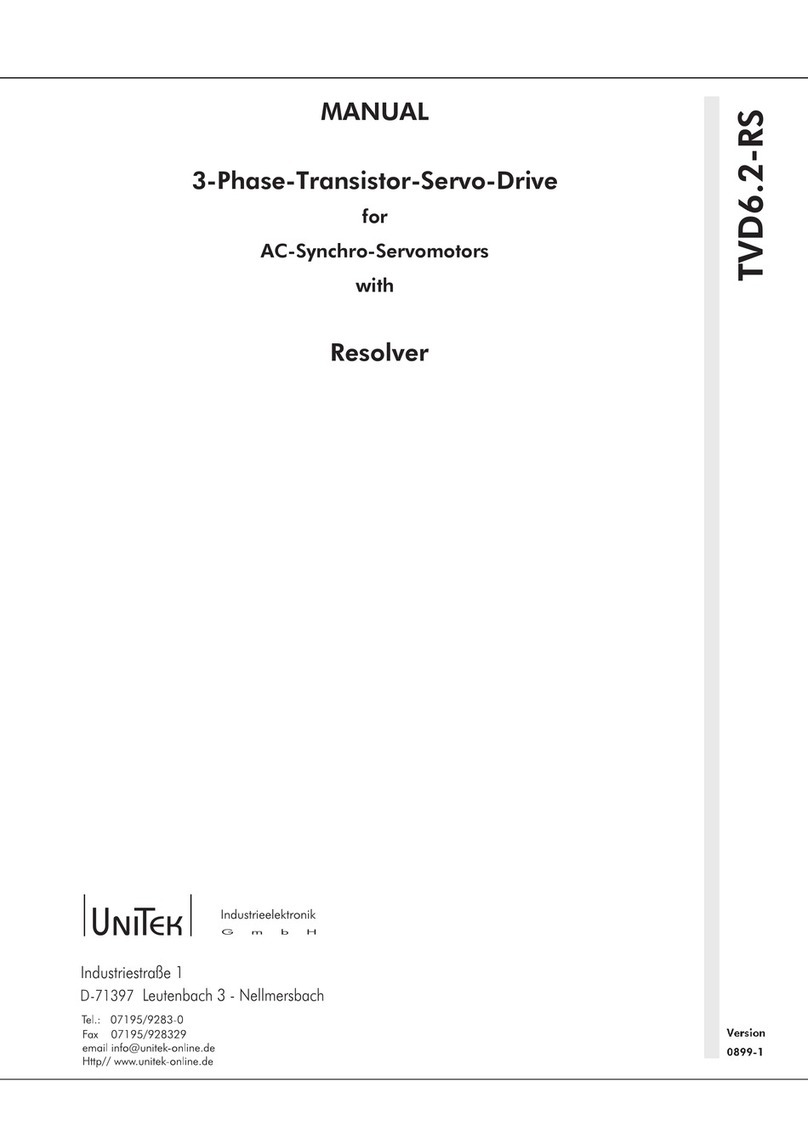
Unitek
Unitek TVD6.2-RS manual
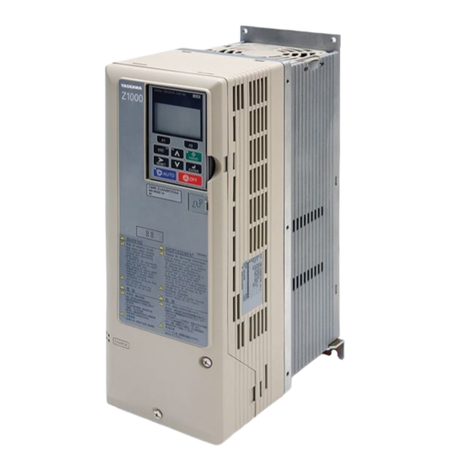
YASKAWA
YASKAWA Z1000 CIMR-ZU*A Series User's manual supplement
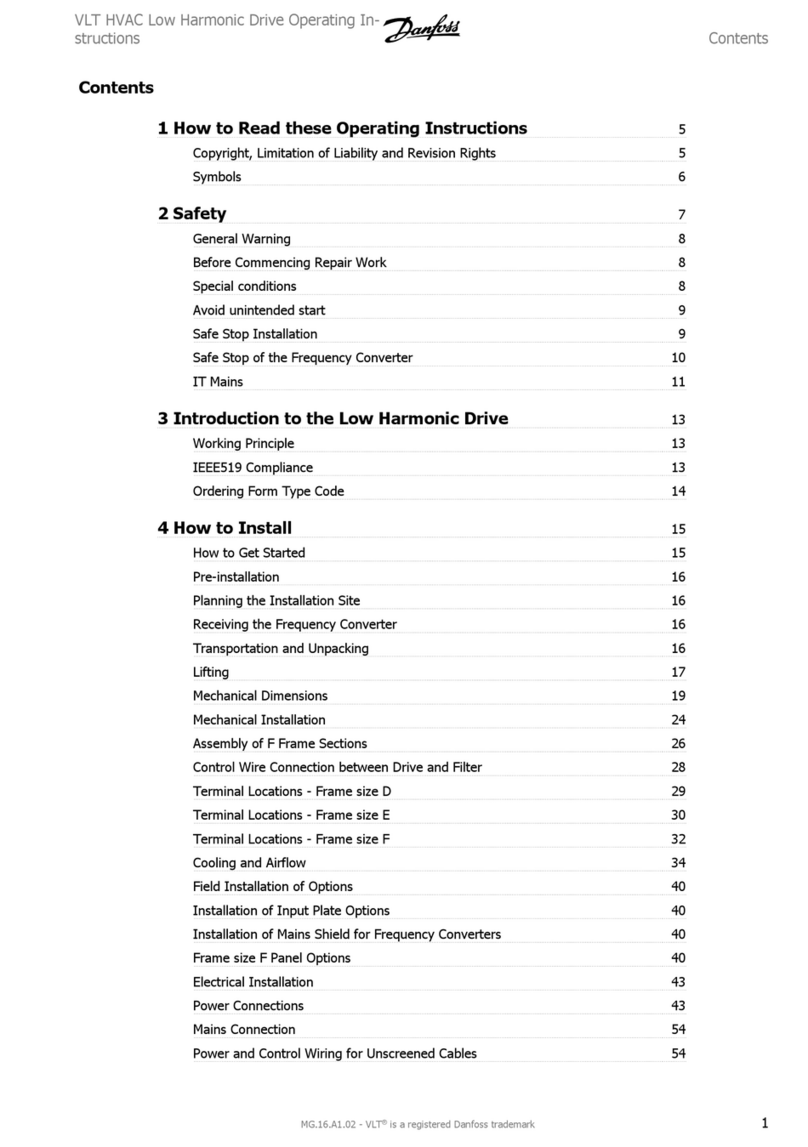
Danfoss
Danfoss VLT HVAC Drive FC 102 operating instructions
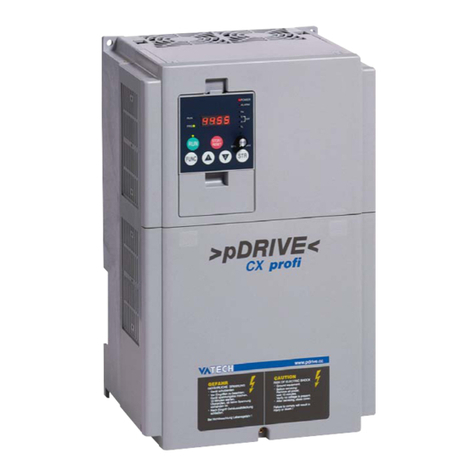
Vatech
Vatech pDRIVE CX profi Operating and mounting instructions
